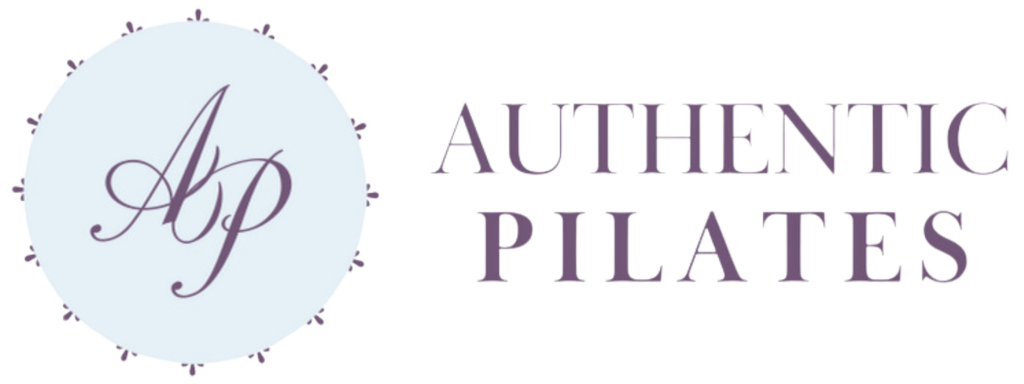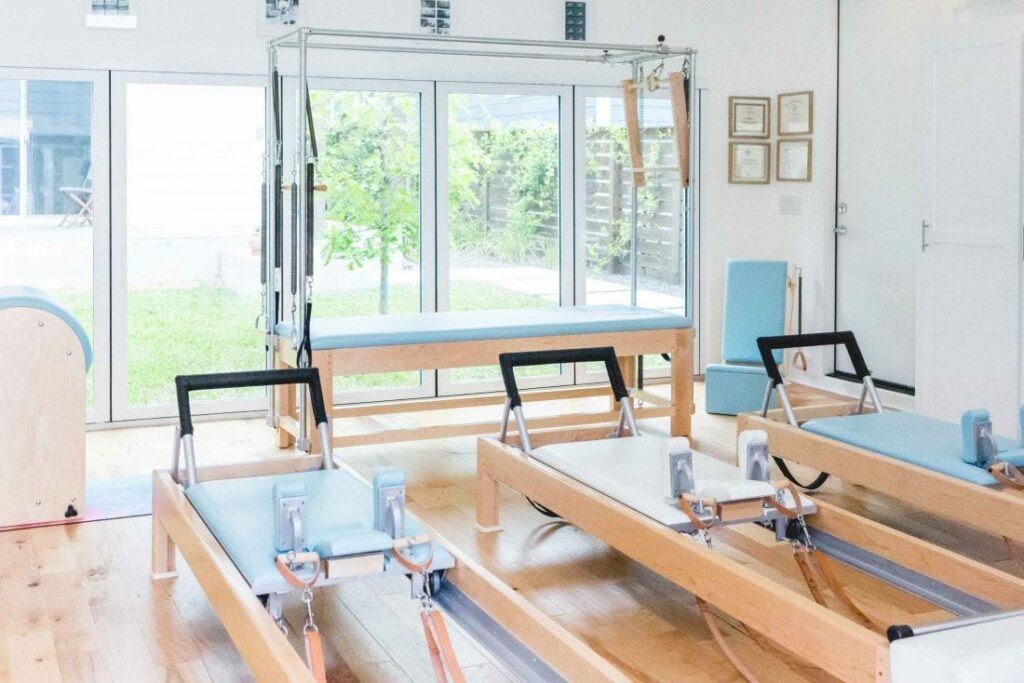Dispelling the Myths & Misconceptions
Pilates has been in existence helping people with their conditioning and health for well over a century, and there are reportedly over nine million people practicing Pilates around the world. Despite this, there are still many myths and misconceptions about Pilates. As a devoted Pilates Professional for over fifteen years, I am passionate about informing the powerful health benefits traditional Pilates has to offer. In addition, I feel a responsibility to not allow this intelligent movement system to be misrepresented with the confusing mixed marketing messages out there today. I want you to be an informed consumer.

Pilates is a systematic, conditioning movement method that was developed by a man of German descent named Joseph Pilates in the early 1900’s. He was a lover of movement from childhood. He grew into an avid athlete in many realms including boxing, martial arts, gymnastics, and diving. He started developing his method of movement when he was marked as an enemy alien of World War I while touring in a martial arts act in England. He was was sent to an internment camp at the Isle of Man. While there, he started helping the soldiers recover and rebuild strength, as well as, teach the other camp detainees his movement system.
Joseph Pilates made it his life’s work to refine his conditioning method of movement for the sole purpose of optimizing one’s health and wellbeing for a long, joyous life. In his book, Return to Life, published in 1945, he explains his philosophy of Contrology (this is what he called Pilates, as it was not until after his passing that the method took on his last name). He defines Contrology as “the complete coordination of body, mind, and spirit.”
(Pilates, 1945 p. 9).
The intention for his Method includes strengthening the breathing muscles and developing uniformity throughout the body for enhanced blood flow and oxygenation at the cellular level. He coined this “the internal shower.” In conjunction with uniformly developing all the bodily muscles, he stressed the importance of the spine being equal parts strong as flexible along with effectively organizing the other major joints of the body, such as the hips and shoulders. This will make a person a better mover while restoring optimal health and vitality. You will be capable of doing your work and play activities easily without pain or discomfort. One of his famous quotes is “If your spine is inflexibly stiff at 30, you are old; if it is completely flexible at 60, you are young.” (Pilates, 1945 p. 16). His six key guiding principles of his method include:
1) Breathing
2) Flowing Movement
3) Centering
4) Concentration
5) Control
6) Precision
Joseph Pilates and his brother, a carpenter, designed and built all of the equipment for the exercises of his method. Much of the equipment involves spring resistance to wake up dormant small muscle groups, create oppositional resistance, and develop a connection into the center of the body. This in turn decompresses the spine and other major joints, as well as, overall strengthens and balances the entire body for better organization internally. Many people often joke when seeing the equipment for the first time that it looks like some kind of medieval torture chamber. Despite the scary names of some of the apparatus, they all provide informative feedback and develop significant skill sets into the body. The equipment names include:
Mat
Reformer
Cadillac/Trapeze Table
Tower/Pole Unit
Wunda Chair
High/Electric Chair
Baby Arm Chair
Ladder Barrel, Spine Corrector, and other Small Barrels
Pedi-pole
Guillotine
Accessory equipment: Foot Corrector, Toe Gizmo, Magic Circle, etc.
The Mat work is the only part of the entire method that does not involve spring resistance. Instead, the oppositional resistance is generated within one’s own body on a mat. Fitness gyms commonly offer Pilates Mat classes due to the ease and affordability of offering to a large group. In the days of Joseph Pilates, all clients practiced Pilates comprehensively. This means to work and progress through the method on all the various apparatus for ultimate conditioning and restoration of health. There was no such thing as Mat class or Reformer class. He considered the Reformer and Mat work to be the “meat and potatoes” of his Method, and the other equipment supplemental for specific individual needs.
One of the great things about Pilates is that it meets you right where you are. Whether you are a weekend warrior athlete wanting refinement and supplemental conditioning or you have been leading a more sedentary lifestyle, there is a place for you in Pilates! It serves every age and stage: young, elderly, injured, athletic, even specialty demographics, such as pre and postnatal mothers. In its elementary form, it can be very therapeutic and rehabilitative helping conditions from general low back pain to specific conditions, such as, sciatica and spinal disc degeneration. In its most advanced form, it looks like acrobatics and can be an extremely challenging workout even for athletic and dancer types.
Overall, people just love the changes it makes deeply within their structure and how good they feel as a result. They typically end up committing to practicing Pilates for a lifespan.
Now that we have covered what Pilates is, let’s clarify what it is not…
Pilates is not a derivative of Yoga. While Pilates and Yoga share some delightful focuses, such as breathing and developing mind-body awareness; they are also very different. Pilates is a very specific system of movement that is not derived from any lineage of Yoga. One of Pilates’ main principles is flowing movement. The movement never stops as it originates from the center of the body expanding outward and returns inward to the center. The stretch in Pilates is considered dynamic (always moving) versus static stretching, such as holding the stretch experienced in Yoga poses.
Pilates is not a class that involves supersize equipment resembling Reformers and doing fitness style exercises to a high number of repetitions in a set period of time. Joseph Pilates believed in building strength with precise, low repetitions and then challenging the body by moving on to the next exercise.
Pilates is not the Barre Method. I once tried a Barre Class. It advertised being a combination of Ballet, Pilates, and Yoga. Having been a ballet dancer for the first 20 years of my life, and a Pilates Professional for almost as equally as long, I kept waiting for the Ballet or Pilates to come along in the class. It never did. Hmmm???
Pilates is not just a “Core Workout.” While Pilates has a very strong abdominal focus for the intention of building spinal support and health, it is actually an entire full-body workout. Spend a couple of sessions on the Reformer, Cadillac, or Wunda Chair, and you will quickly realize you are working your entire being from head to toes! You might even find yourself quivering all over.
I hope this clears up some myths and misconceptions about Pilates. I can’t wait for you to try your Authentic Pilates session to become your best version of good health!
Wellness Wishes,
Lindy Irwin
Pilates, J.H., & Miller, W.J. (1945) A Pilates’ primer-the millennium edition: Return to life through contrology and your health. Incline Village, NV: Presentation Dynamics Inc.



